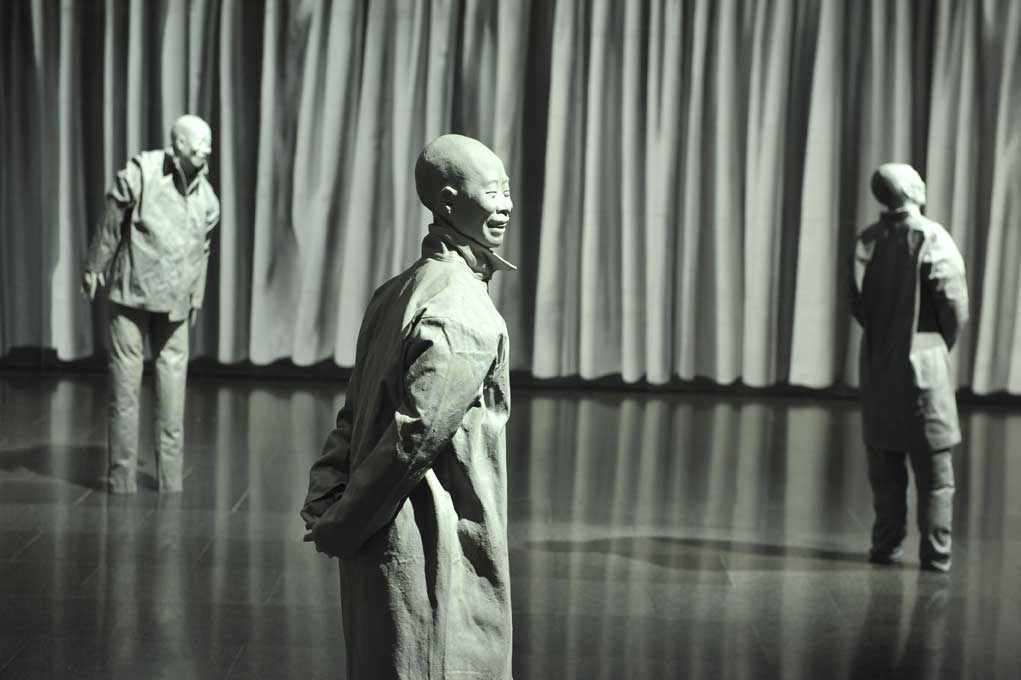‘Less is more’, as Mies van der Rohe famously said. Considering that the architect’s Barcelona Pavilion for the city’s 1929 International Expo is a key reference point in this exhibition, the organisers might have paid heed and honed down its 400 works by 125 Catalan, Spanish and international artists. And yet this achievement deserves to be acknowledged as a tour de force, one that is not without political significance.
Earlier this year, MACBA was crippled by a €1.5 million deficit unpaid by Spain’s central government. With this coming on top of earlier stringent cuts, the museum was not only forced to look to its own collection, but to that of the bank-funded ‘La Caixa’ Foundation to stage this cost-effective mega-survey that seeks to reevaluate ideas of ‘contemporariness’ (their term) from the unique perspective of Barcelona. And therein lies the problem.
There are moments when it is possible to forget the curatorial agenda and simply marvel at how well Spanish art fares in this international context. In particular, the MACBA galleries connecting the Informalist painters of the 1950s and 60s (Antoni Tàpies, the Madrid-based El Paso group) to the painters who dominated in the following two decades (Ferran Garcia Sevilla, Frederic Amat, Miquel Barceló, José Manuel Broto, José María Sicilia) display incredible verve. But thereafter we are returned to a reading filtered through the evolution of Barcelona’s own self-image, historical moments that feel imposed on the local artists and bewilderingly irrelevant to those from further afield.
Through wall texts, stock footage and other archive material, these key stages in Barcelona’s awakening take us in a progression from the 1888 and 1929 Expos, through the Civil War, dictatorship and democratic transition, to the 1992 Olympics and the city’s subsequent restyling as a post-Fordist service economy catering to tourism. Curiously, there is no direct reference to the property-bubble collapse, the single most important consideration post-2008. Anachronistically, there’s Hans Haacke’s Shapolsky et al…, a work from 1971 exposing property scandals in Manhattan. And we have Manolo Laguillo’s record of the pre- and post-Olympic building bonanza, but MACBA already committed itself to reading this photo archive in a positive light with an exhibition back in 2007, before anyone saw the economic perils of unbridled development. So where are the indignados, artists like Ruben Santiago whose political narratives give voice to the present-day protests on the streets?
Undoubtedly, the intention is to demonstrate both the vertical and horizontal – the importance of local context intersecting with the general flow of the international avant-garde – but the net effect of this intrusive framing is to emphasise how often Spanish art has coat-tailed on external influences, at times compensating by overelaboration. However, this tendency towards the baroque and the carnivalesque does come into its own (the exhibitionist burlesque of José Pérez Ocaña, the processional events of Perejaume, the kitsch food-based work of Antoni Miralda), though yet again this important component to ‘contemporariness’ is absent from the present show.
The second half of the exhibition is staged at the imposing CaixaForum, but while there is a degree of collection sharing, the massed holdings of one of Spain’s largest saving banks are predictably blue-chip, though the presentation is mercifully free of overblown readings, and the homogeneity of the international cast is interspersed with some interesting local talent. Both venues present an opportunity to catch up on artists who have escaped the ubiquity of the international circuit and are too little seen; artists like Ignasi Aballí, Joan Rom, Pep Duran, Pepe Espaliú, Antoni Muntadas, Ana Prada, Antoni Llena and Joan Rabascall, to name but a few. Just remember to blinker up and ignore the info boards.
Museu d’Art Contemporani de Barcelona (MACBA) through January / CaixaForum Barcelona through 29 December
This review was first published in the October 2013 issue.
